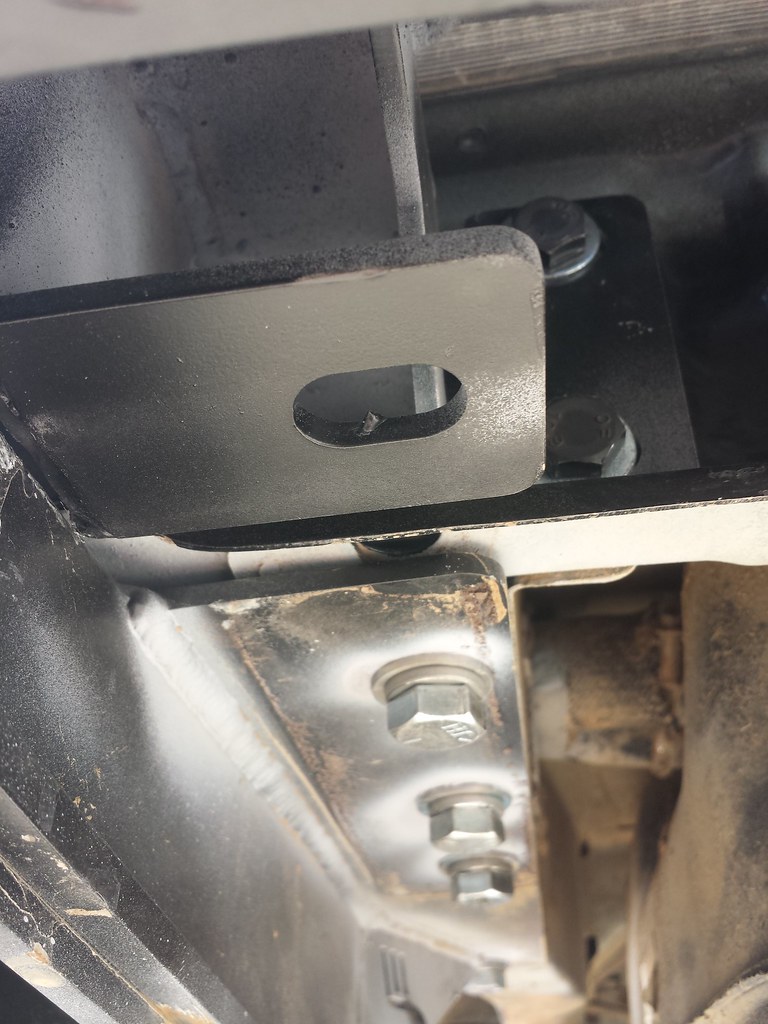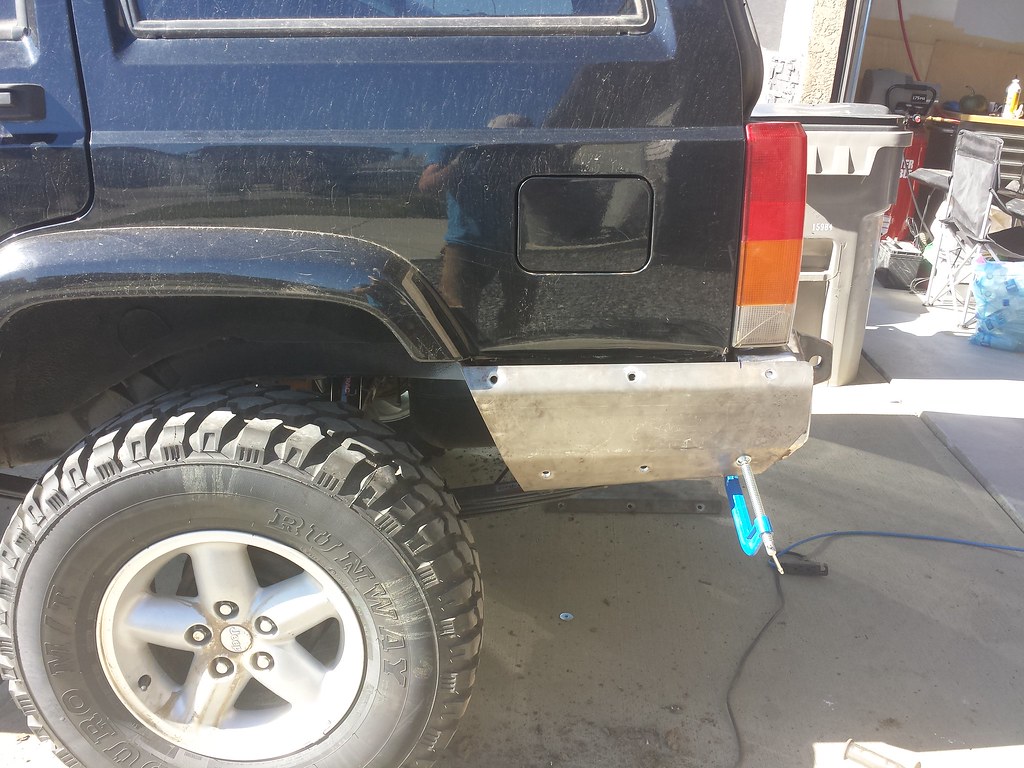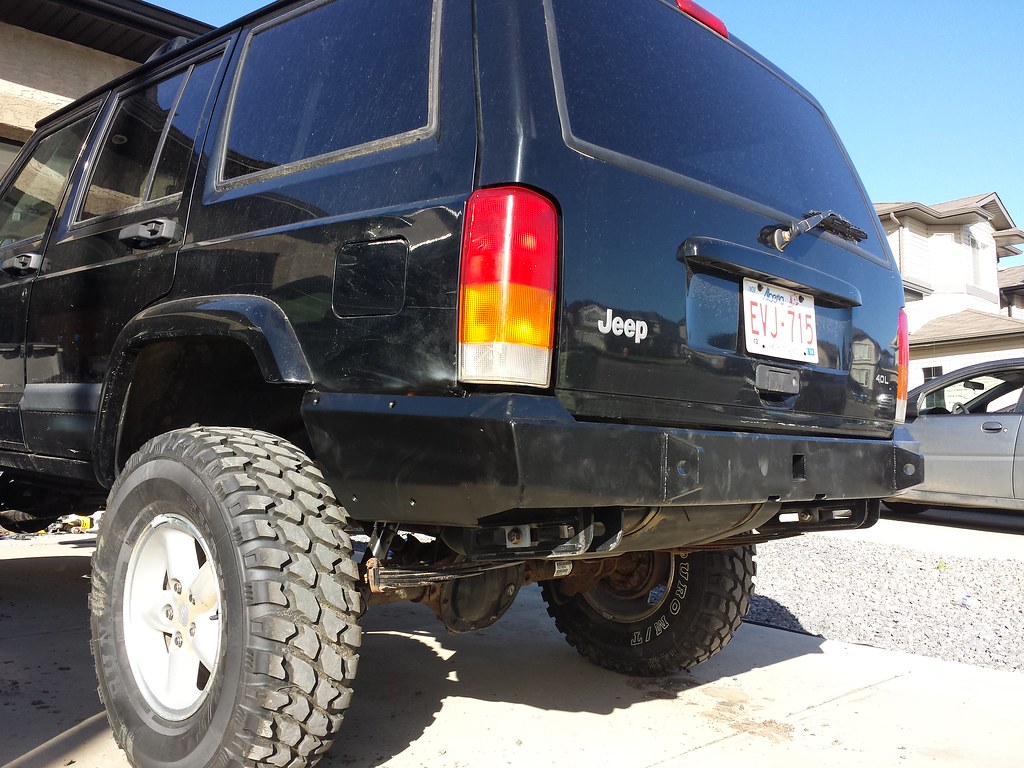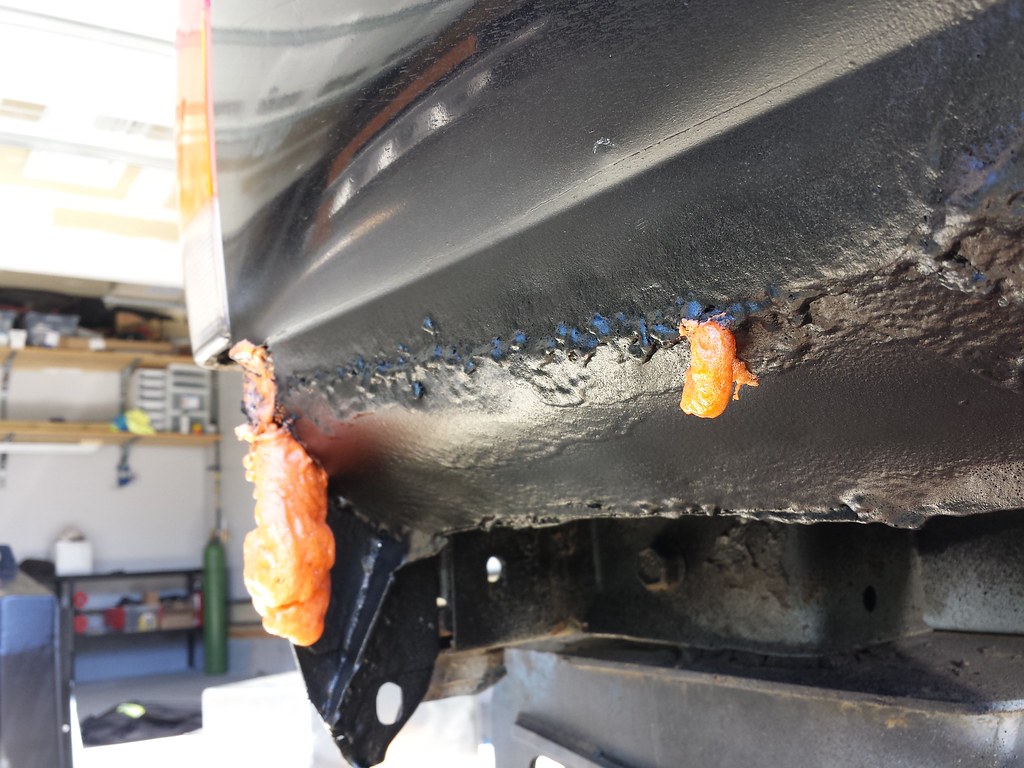So I bought the DIY JRC rear bumper and the rear lower armour.
And aside from a couple little fitment issues it came out pretty good. If anyone else is buying the DIY I would recommend cutting the part the mounts to the stock bumper holes instead of using the bend tabs, this is where I had fitment issues, since the folding wasn't as consistent as I expected it to be. And then having it pull a little bit with the welding didn't help. I still have slight issues, but it's close enough for now.
For my first question, does anyone else have this bumper and pull from it? I feel like it uses the 8 (4 on each side) stock bumper bolts for most of it's support.

They have this extra little tab on the bumper to tie it into like where the hitch would mount, but still feel like it would only really take much force after the 4 stock mount bolts busted out.
I have a piece of steel I cut to attach it to the other bolts, but still feel like it's too little.
My other issue is that the rear quarter armour is made for an older style bumper it seems, so I had to improvise.

Hard to see, but it doesn't line up with the profile of the rear of the bumper. hard to see, but it's also angled away from the body a few degrees.
So I cut it shorter and welded it onto the end flush. Plan is to tie the holes in the armor to that front most bolt on the nut strip in the frame, make it a little more rigid.

I had some pretty bad rust issues in the rear lower quarters, letting swamp water into my hatch area a couple times, so I cut it all away and welded a cover over.
Except welding 20 gauge sucks a LOT, so it was pretty gross and I was at my wits end. so I spray the outside with bedliner in a can a few coats to seal it, realized I had a few too many ugly holes so went crazy with the spray foam inside the fender wells there.
Had a few leaks.

Once it dried I just cut the orange off and sprayed the bedliner stuff on a few more times.
Thanks for looking!
And aside from a couple little fitment issues it came out pretty good. If anyone else is buying the DIY I would recommend cutting the part the mounts to the stock bumper holes instead of using the bend tabs, this is where I had fitment issues, since the folding wasn't as consistent as I expected it to be. And then having it pull a little bit with the welding didn't help. I still have slight issues, but it's close enough for now.
For my first question, does anyone else have this bumper and pull from it? I feel like it uses the 8 (4 on each side) stock bumper bolts for most of it's support.

They have this extra little tab on the bumper to tie it into like where the hitch would mount, but still feel like it would only really take much force after the 4 stock mount bolts busted out.
I have a piece of steel I cut to attach it to the other bolts, but still feel like it's too little.
My other issue is that the rear quarter armour is made for an older style bumper it seems, so I had to improvise.

Hard to see, but it doesn't line up with the profile of the rear of the bumper. hard to see, but it's also angled away from the body a few degrees.
So I cut it shorter and welded it onto the end flush. Plan is to tie the holes in the armor to that front most bolt on the nut strip in the frame, make it a little more rigid.

I had some pretty bad rust issues in the rear lower quarters, letting swamp water into my hatch area a couple times, so I cut it all away and welded a cover over.
Except welding 20 gauge sucks a LOT, so it was pretty gross and I was at my wits end. so I spray the outside with bedliner in a can a few coats to seal it, realized I had a few too many ugly holes so went crazy with the spray foam inside the fender wells there.
Had a few leaks.

Once it dried I just cut the orange off and sprayed the bedliner stuff on a few more times.
Thanks for looking!
